Reference this Baking with Yeast Guide whenever you work with baker’s yeast. I include practical answers to all of your common yeast questions.
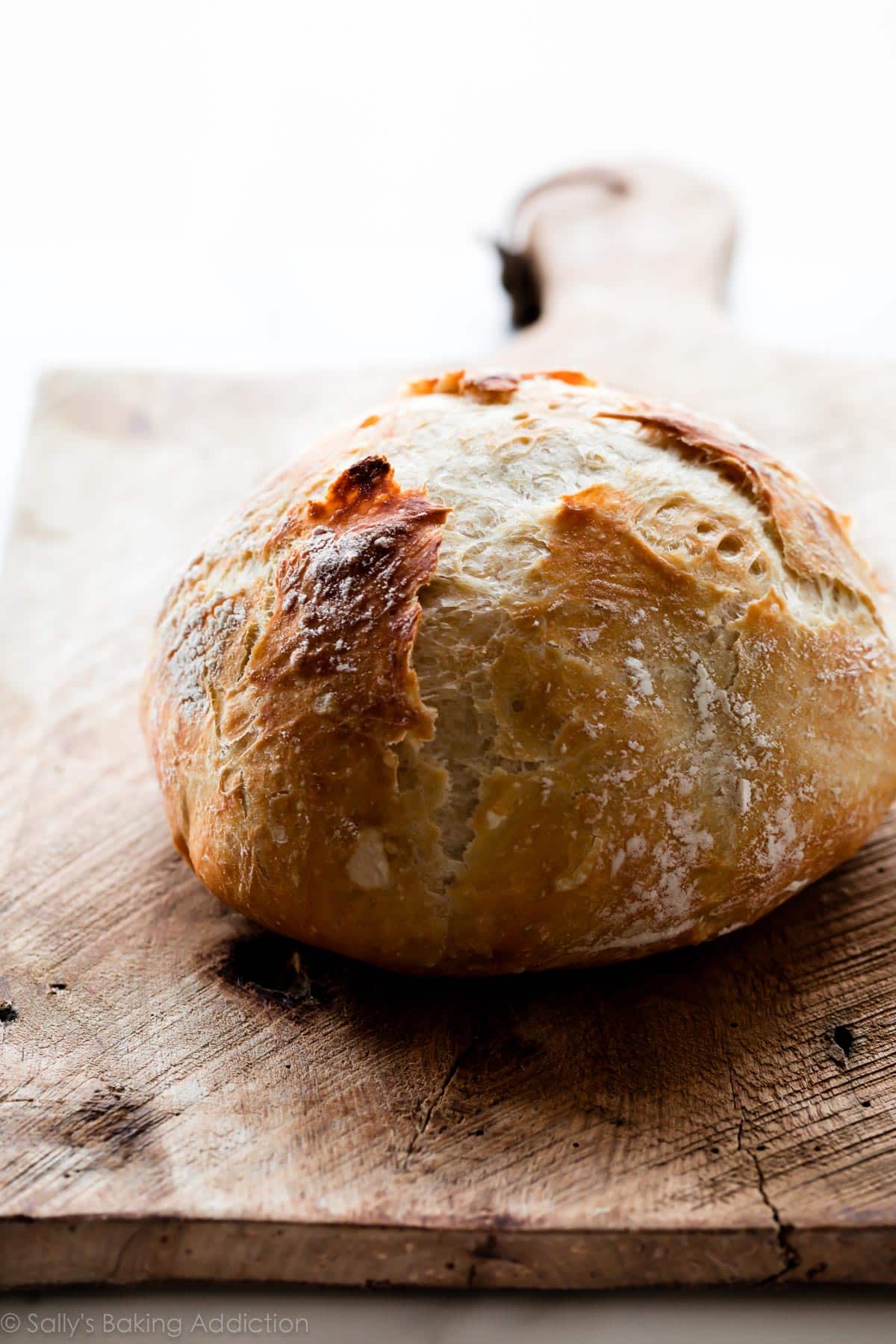
Welcome to your complete guide to Baking with Yeast.
Many of you have responded to a question I ask in my baking email series… what baking recipe intimidates you the most? A majority say yeast breads.
Baking with yeast used to intimidate me too. Something about yeast seems really scary! And, what’s worse, some yeast recipes are complicated and arduous. But once I began to understand that yeast is simply another ingredient in the bowl, my fears subsided. And if you begin with easy yeast recipes, your confidence builds.
Whether you’re a beginner baker or pro, it’s important to understand how yeast works. I urge you to read through this guide where I answer many common yeast questions. I wrote this in partnership with Red Star Yeast, so you can be confident the information is very helpful. I’ve worked with Red Star Yeast for nearly 7 years because it’s my preferred brand!
It’s time to tackle your fear of yeast and bread baking! 🙂
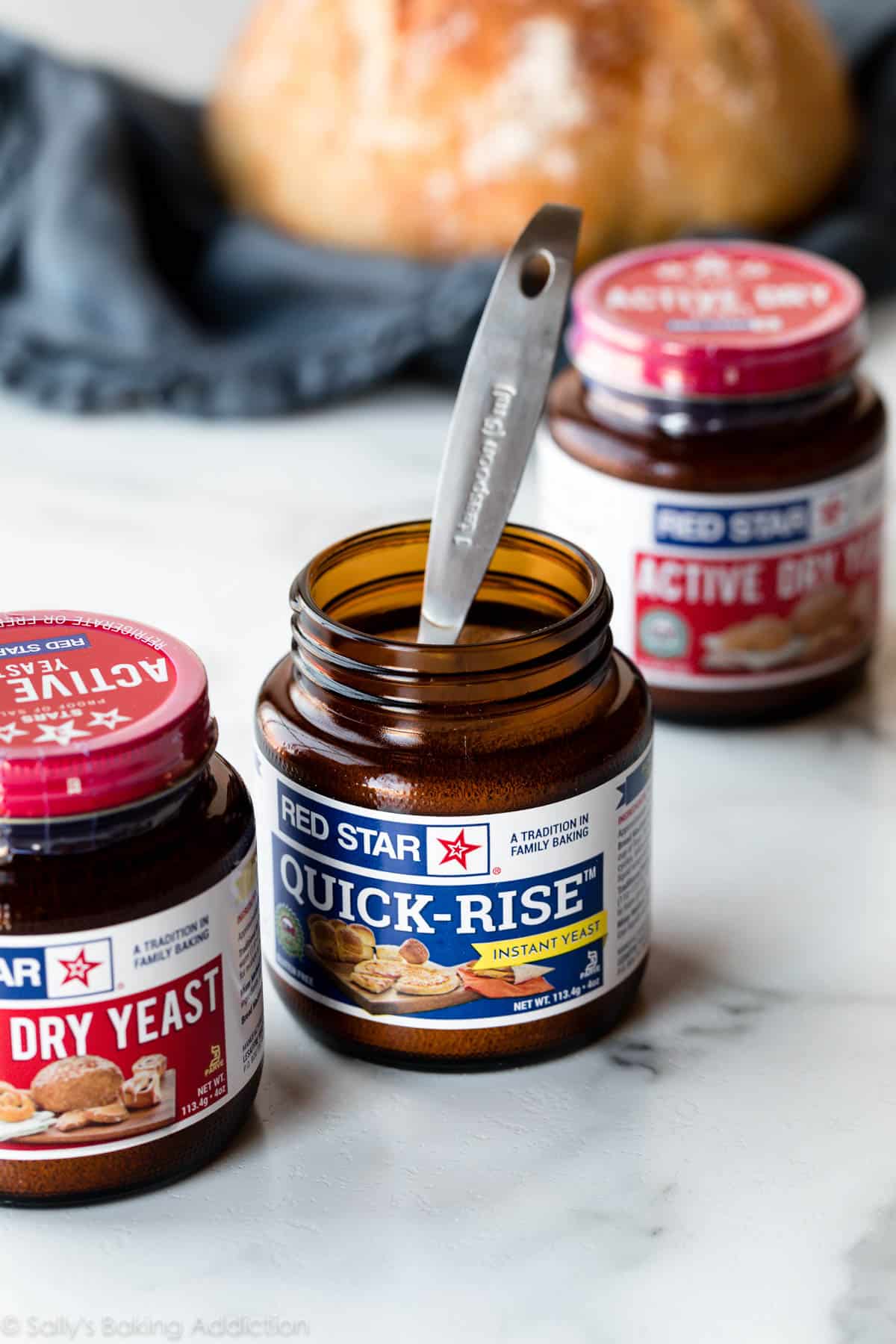
What is Yeast?
Yeast is a living organism. It needs food and moisture to thrive. There are 2 main forms of yeast: brewer’s yeast and baker’s yeast. Brewer’s yeast is used primarily in beer making and baker’s yeast is used in baking. Yeast feeds on sugar and converts it into alcohol and carbon dioxide through fermentation. Alcohol is useful in beer making and carbon dioxide is responsible for stretching and expanding the dough, something we see as the dough rises. Yeast fermentation also provides the flavor and texture you expect in yeast-raised recipes.
There are 2 Main Types of Baker’s Yeast
- Wet Yeast – Also known as Cake Yeast, Fresh Yeast, or Compressed Yeast.
- Dry Yeast – Sold as Active Dry and Instant Yeast.
Cake Yeast Vs Dry Yeast
Cake yeast is wet yeast sold in block or “cake” form. It’s active and highly perishable. To use cake yeast, crumble over dry ingredients or dissolve in the liquid used in the recipe. Today, cake yeast is only available in limited stores.
Dry yeast, on the other hand, has a longer shelf life because it’s been dried out. It’s granulated and sold in little packets or loose in a jar. It is in a dormant state and if the package isn’t opened yet, can be stored at room temperature. Dry yeast requires different liquid amounts and temperatures than cake yeast.
Here is a helpful cake yeast & dry yeast conversion table.
Types of Dry Yeast
Because it’s most common, we’re focusing on Dry Yeast in this Baking with Yeast Guide. There are two types of dry yeast available: Active Dry Yeast and Instant Yeast. They both require liquid to “wake” out of their dormant state.
- Active Dry Yeast
- Instant Yeast – Also known as Fast Rising Yeast or Fast Acting Yeast.
Red Star Platinum Yeast
This is, by far, my preferred yeast!! Platinum Yeast from Red Star is an instant yeast blended with natural dough improvers. These dough improvers are naturally occurring enzymes derived from protein in wheat flour. They strengthen the dough and build tolerance to variations in flour strength and the baking process (kneading, rising, etc.) As a result, the dough traps more of the leavening being produced by the yeast for an overall better rise and better volume in the finished baked good. Most of the yeast recipes on my website are made with Platinum Yeast from Red Star. It’s fantastic for yeast beginners.
Can I Substitute Active Dry Yeast for Instant Yeast and Vice Versa?
Yes. Active dry yeast has a moderate rate of rising and instant dry yeast has a faster rate of rising. Active dry and instant yeast can be used interchangeably in recipes (1:1); just keep an eye on your dough so it doesn’t rise too much.
Can I Store Dry Yeast in the Freezer?
Yes, you can store dry yeast in the freezer. The experts at Red Star Yeast actually recommended it! Place the yeast towards the back of the freezer so it’s not exposed to temperature changes when you open the door. To thaw, measure the amount you need and set it on the counter for 45-60 minutes before using. The colder it is, the longer it will take to “get going.”
Do I Refrigerate or Freeze Dry Yeast After Opening?
Dry yeast is perishable. Once your package is opened, the yeast must be refrigerated or frozen in an airtight container. Use within 4 months if refrigerated and 6 months if frozen.
What is Proofing Yeast?
Proofing dry yeast is sometimes a step in a recipe. This step is basically just “proving” that the yeast is alive and active. You dissolve the contents of the packet in warm water/milk with some sugar. After 5-10 minutes, the mixture should be foamy. If not, the yeast is dead and should be tossed. However, if used before the expiration date, this step isn’t really necessary with modern active dry or instant yeast. Still, some of recipes call for it, just to be extra certain the yeast is alive. (If using quality yeast, it usually is alive!)
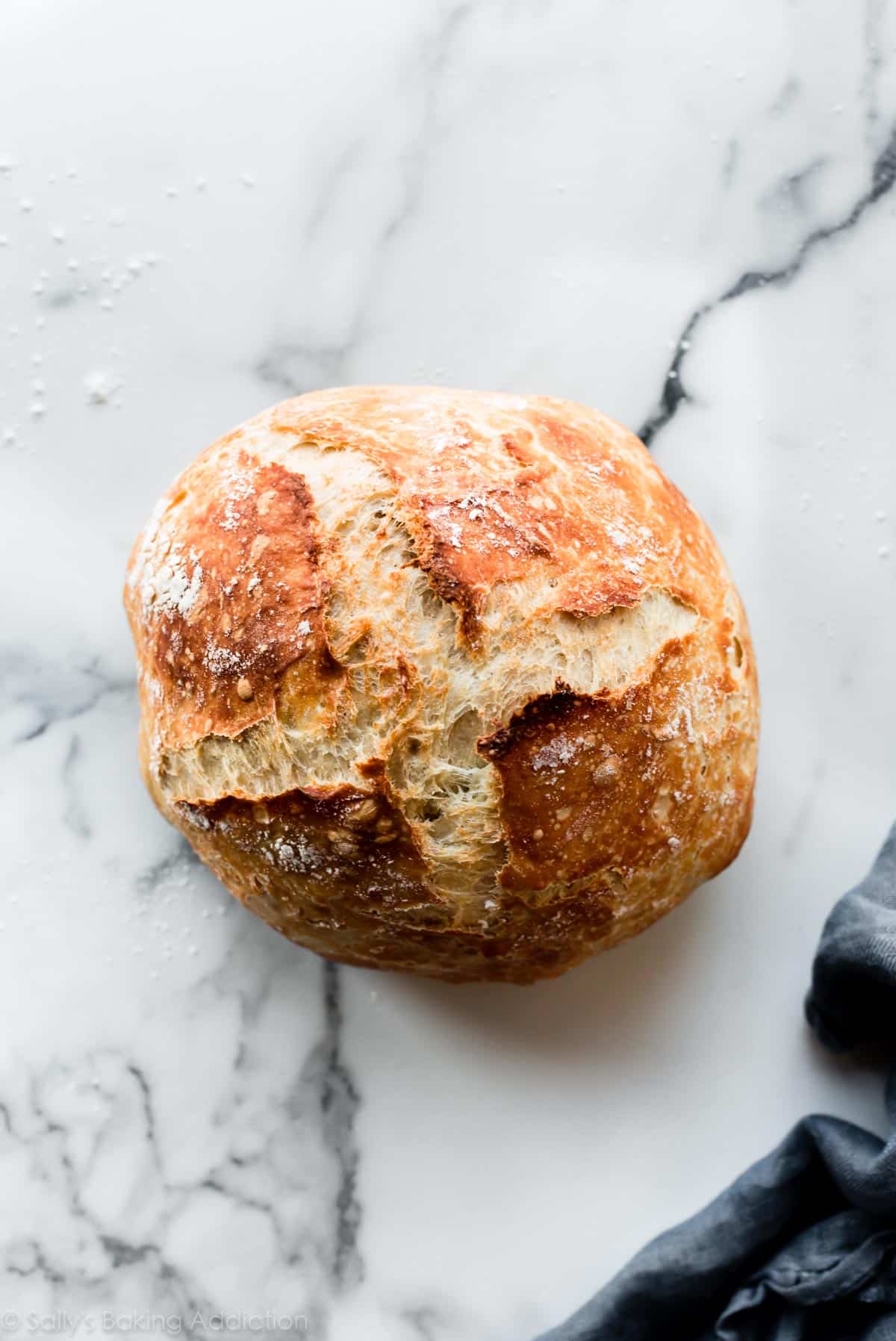
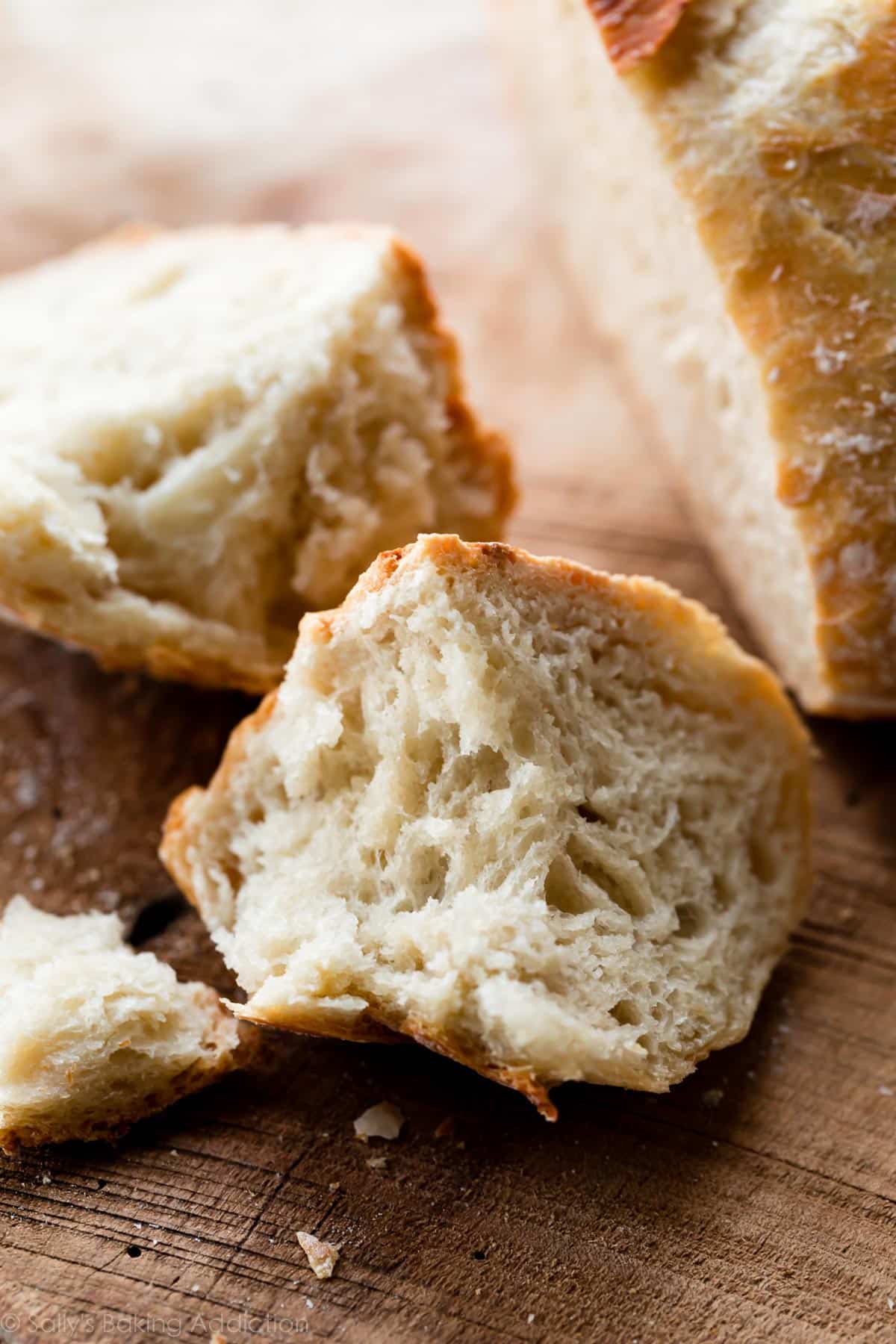
How Is Yeast Used in Baking?
When combined with liquid and sugar, yeast makes dough rise. Yeast, while also providing flavor, creates carbon dioxide in the dough. This stretches and expands it. Yeast thrives in warm temperature, which is why warm liquid is added to dough. However, yeast will begin to die in temperatures 135°F (57°C) or higher. A good rule of thumb: if it’s too hot to touch, it’s too hot for the yeast. Yeast is also effective in cooler temperatures, but it requires more time to expand the dough. Some bakers prefer a slower rise time because more flavor is produced in the process.
Where Should Dough Rise?
Cover and place dough in a warm draft-free place for as long as the recipe instructs. This crucial time is when the yeast ferments the sugar into carbon dioxide and alcohol. (See previous question.) The kitchen counter is fine, but if you’re pressed for time, you can speed up the rising process by placing the dough in the oven. Preheat the oven to 150°F (65°C), then immediately turn the oven off. Wait a few minutes, then place the dough in the bowl inside the oven with the oven door cracked open. This will be a warm environment for your dough to rise. After about 30 minutes, close the oven door to trap the air inside with the rising dough.
Dough can also rise in cooler temperatures, but the yeast activity slows down and the rise time extends. Here is more information on dough rising.
What if My Dough Isn’t Rising?
There are a few factors that prevent your dough from rising:
- Temperatures are too cold. Place dough in a warmer environment.
- Yeast is expired or dead. Start over with new yeast.
- Liquid in the dough was too hot, which killed the yeast. Start over with new dough.
- Too much flour or sugar in the dough. Be mindful of your measurements and remember that it’s ok for dough to be a little sticky. Don’t over-flour.
- Type of flour. Flours with higher protein content have superior dough (gluten) forming and rising properties. Here is more information on flour types.
- Kneading too little or too much.
How Do I Knead Dough?
Kneading dough is a common step in bread baking. You can knead dough with your hands or in a stand mixer. A stand mixer obviously makes the job shorter and easier, but kneading by hand is gratifying… and a great stress reliever too! I have a full tutorial with a video about how to knead dough that can help with this step.
Kneading the dough serves a couple purposes. First, it incorporates air into the dough. It also encourages the proteins in the flour and moisture in the dough to link together, forming a strong gluten network which is essential for retaining the gas produced by the yeast. Gluten is what makes bread deliciously chewy.
What is a Typical Yeast to Flour Ratio?
One packet of dry yeast (2 and 1/4 teaspoons) will raise up to 4 cups of flour.
What Does it Mean to Let Dough Rest?
It’s advantageous to let dough rest after working or shaping it. Cover the dough with a clean towel or plastic wrap and set it aside. This little “nap” allows the gluten to relax and settle, which lends to a more voluminous bread. A little rest also makes the dough easier to shape. So if you notice your dough is extremely elastic, cover and set it aside for 10-15 minutes, then return to shaping it.
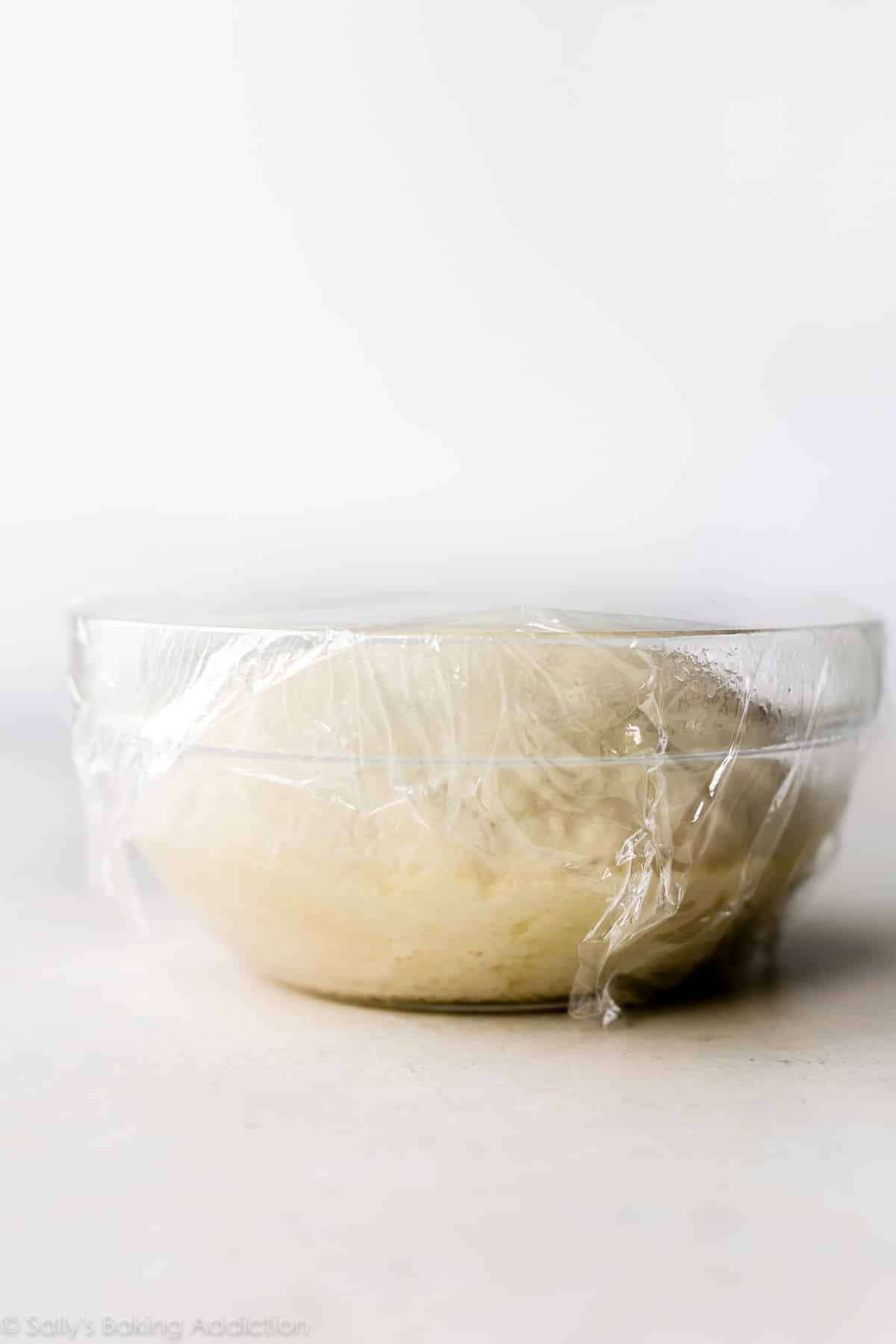
Where Do I Begin?
Now that you have a better grasp on baking with yeast, start with an easy recipe: No Knead Bread. (Pictured above without the cranberries and walnuts.) This no mixer, no knead bread recipe comes together in 1 bowl. The yeast requires at least 12 hours to raise the dough, so just let it sit on your counter. Very little hands-on work. It’s a great recipe to begin the day before. I also have a 4 ingredients homemade artisan bread that requires very little hands-on time.
More Favorite Easy Yeast Recipes:
- Cinnamon Rolls – Shaped yeast doughs, such as cinnamon rolls, Nutella babka, and dinner rolls, usually require 2 rises. This easy cinnamon rolls recipe skips 1 rise, so it cuts the time in half. I also have a recipe for traditional overnight cinnamon rolls.
- Flatbread Dough – Make thin crust style pizza with this 45 minute flatbread dough. My homemade pizza dough is also very easy, though it’s thicker and requires a slightly longer rise time. Both have great flavor.
- Homemade Bread Bowls – Pictured below. This is a very basic bread dough that you can flavor and use for many recipes. See the recipe notes.
Q: Was this guide helpful to you?
More Helpful Baking Tips
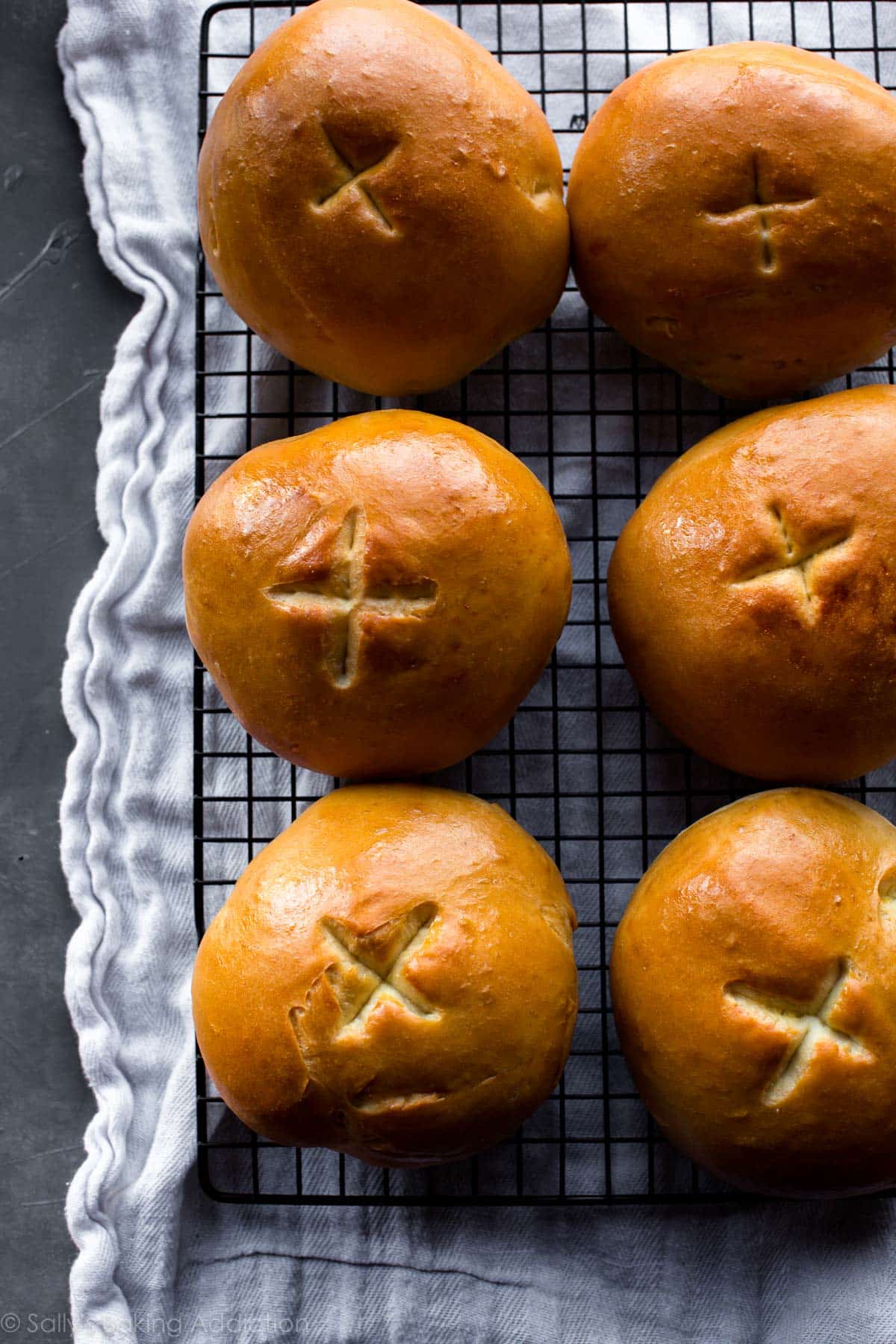



















I have made the dinner rolls twice with same outcome. All goes well until I bake them. They actually fall from their rise a bit. The taste is good but the they are too flat. What am I doing wrong?
Hi Jo, I’m happy to help! Deflating breads and rolls could be the result of over-proofing. During either of the 2 rises, the dough may be rising too much which often results in deflating as the bread/rolls bake. This should be an easy fix if you try them again!
This same this has happened to me! I have tried two recipes using Red Star instant yeast packets that won’t rise or proof. Your comment made me think it must be the yeast. Super frustrating.
Hi I made this bread at home with active dry yeast and followed direction’s on packet and was great. I am. Making it again with a platinum yeast. Quick rise and like hour video I just added it to the dough. It doesn’t seem to be rising as good thos time. Should I follow the instructions on the packet and then added to my dough?
i am new to using yeast. usually make soda bread. i think checking if your yeast is good before you start should be mandatory. plus is fun to watch the yeast bubble as it sits. this will save a lot of time to find out your dough wont rise. thank you for your info it is very helpful
Love your recipes! I am yeast intolerant and find I do much better with a Sourdough Starter. Although, I’d really like sandwich bread. Have you ever made sandwich bread with a starter instead of yeast?
Hi Jenny, we wish we could help but don’t have much experience working with sourdough starters. Let us know if you find a good resource!
I have a great recipe for rolls. It calls for 2 envelopes of yeast. What I need to know is how much yeast I need to use so I can keep the dough in the fridge and bake the number of rolls I need at one time and not the whole recipe. Thanks!
Hi Sally
I’m new to making Artisan bread My first batch th dough seemed dry and after proofing overnight I kneaded it before letting it sit covered for 1 he before baking
It was uncooked on the bottom at 450 oven . Today I made it more watery sticky and after overnight it doubled in size, I then put in covered bowl on stove covered with towels as heat from oven coming out of vents might be too hot
After it was double again but when I put it on the bake sheet it was very sticky , I sprinkled flour to allow forming it in a loaf shape
It is delicious but very small It’s like it rose so much then in oven it didn’t rise so big
Still thoroughly baked and tastes good
How do I get my bread to rise in oven
Am I supposed to knead this no knead recipe dough
It just seemed like a floppy dough when I put on oven Any and all suggestions much appreciated because it’s a lot of flour
I add 6 cups flour to 1packet Platimyeast and 1cup water but added at least another cup of water because it was so dry
Great tutorial. I do have yeast that has been kept in my freezer for over 2 years and now in fridge for over a year and I’m still using it with no problems. I do proof every time to make sure it’s still good and so far as of last week it was still working. Started with 2 of the 1? pound large pkg’s from Sam’s and immediately put them in the freezer. I do keep packets of different kinds for that time when the yeast no longer bubbles. But tomorrow it will be cheese bread. Wow does that sound good.
Thank you so much for sharing this info. Like many others, I started baking bread and love the results. I wasn’t sure if I was doing it correctly until my family ate it all in a matter of seconds!! I’m looking forward to trying your recipes.
Hi Sally! Question: Does yeast work with gluten-free recipes? I’ve wondered this and searched for it, but my searches have always come up with me still wondering the same thing. Thank you so much!
Hi Peyton, it does but the recipe must be formulated for the missing gluten. Meaning, it’s not usually a seamless switch from regular flour to GF flour. Always look for recipes that specifically call for gluten free flour. I hope this helps!
I like a nice chewy bread and I know that some pizza companies actually test their flour to insure a high gluten content to get that texture. I know this sounds odd in the age of anti gluten, but do you ever add gluten to bread recipes?
Hi Sally, thanks for this recipe! I’m trying it out right now- I let the dough start to rise an hour ago, but 1-2 hours is a pretty big window. Should I let it rise for another hour? I used active dry yeast. The dough is definitely bigger but I can’t quite tell if it’s double. thank you!
Hi DJ! I’m unsure what recipe you’re referring to, but you can just eyeball when the dough in doubled in size! The large time window accounts for the different environments bakers may be in. Dough rises much faster in warm, humid environments and slower in dry cold ones.
What is the recipe for the crusty bread pictured in the middle?
Hi Deb, The pictured loaf is this No Knead Bread without the cranberries and walnuts.
Hi! I have been looking for a good sandwich bread recipe. I tried your ‘Simply Sandwich Bread’ recipe for the first time today. It rose beautifully and tastes good, but it is so soft that we could barely slice it! In looking at the pics posted, I noticed mine was ‘crumbly’ inside, instead of having the sort of circular striations (if that makes sense)? Do I need to do something differently? Thanks!!
It’s possible the loaf wasn’t finished baking. Over-proofing is a possibility as well, but you may simply want to wait for it to cool down a little longer. The longer it cools, the more the center can “set” and the neater your slices will be. I recommend a very sharp serrated knife. Hope this helps!
Hi there – so I have a simple recipe I Iike for multigrain bread that I’ve only made with active dry yeast. How would I proceed with instant yeast as the original recipe calls for proofing? Would I just add the instant yeast to the warm milk/shortening mixture and proceed from there? Thanks!
Hi Elizabeth! I actually just answered this question above! This is my personal preference and it’s always worked– whenever I swap instant yeast for active-dry yeast, I always follow the same exact directions including proofing the yeast with the warm water/liquid (and sugar, depending on the recipe). It doesn’t hurt the dough.
Hi,
I have a question about substituting Instant Dry Yeast in place of Active Yeast.
The active yeast recipes call for mixing water (sometime with sugar) and the yeast and then let set for several minutes. My question is when I substitute instant yeast and put right with the flour do I still need to add the water and sugar quantities that I would have mixed with the active yeast.
Hi Debby, yes, you would still need those additional ingredients in the dough. This is my personal preference and it’s always worked– whenever I swap instant yeast for active-dry yeast, I always follow the same exact directions including proofing the yeast with the warm water/liquid (and sugar, depending on the recipe). It doesn’t hurt the dough.
Great site! The yeast ratio you indicated was “One packet of dry yeast (2 and 1/4 teaspoons) will raise up to 4 cups of flour”, why is that the cranberry and walnut loaf recipe here only calls for 1/2 teaspoon of yeast? I was thinking it should be more because the nuts and fruit has weight. I haven’t made it yet, but it’s on my to do list this week.
Hi Tina, I’m happy to help clarify. The significant amount of rise/rest time in the No Knead Cranberry Nut Bread, as well as the volume of water in the dough, makes up for the lack of quantity of yeast. Let me know how you like the bread! It’s one of my very favorites.
Hi again, Sally! I made the buns for the second time and they were perfect. But I have a problem. The dough is too sticky and it is hard to work with. The quantities were correct because I weighted them. Can you please help me?
Hi Sally! Question, when substituting active dry yeast for the instant yeast in your 4 ingredient homemade artisan bread, do I need to proof the active dry yeast in water first and add to the flour as part of the water quantity or do I add the active dry yeast, in it’s dry form, directly to the flour as in the original instructions using the instant yeast? Thank you!
Hi Kimberly, no changes necessary. The rise and development of the dough is so extended that active dry works wonderfully. Replace the instant yeast with it, making zero changes. A 1:1 substitution.
This recipe is a keeper! I chose to refrigerate the dough for about 20 hours and used the steam method in the oven. I did however had to disturb the bread (switch pans) mid-bake which may have caused my bread not to rise but rather spread so it did not come out the prettiest. But the taste, texture and crust were delicious! With lessons learned, I am looking forward to making my next batch of loaves!
I had the same question as Kimberly. This is my very first go at baking bread of any sort (not counting pizza dough), and I was confused about how to add the yeast (Red Star, as it is the only thing available). I added warm water and sugar to the packet (because that’s what the packet said to do, and there wasn’t any direction in the recipe (your artisan bread) about adding it dry or wet. Like Kimberly, I wasn’t sure if I should count the proofed yeast as liquid, or? And in its proofed form, what quantity? (Do we add just a teaspoon — or whatever the recipe calls for — of the liquid or the whole batch since it started with about the same called-for amount?). In your response, you simply say “no change necessary.” but that doesn’t really answer our question about how much liquid to add, and if we should lessen the amount of water accordingly. I’m also not sure about the yeast: it did bubble double in size, but was foam on top and liquid below. Which do we measure/add? Thank so much for all the care and time you’ve put into sharing your knowledge and skill; it gave me the confidence to give bread a try!
Hi Vanessa, I’m just seeing your comment/question now so my apologies for the delay responding to you. For the artisan bread recipe and any yeasted bread recipes on my website that you use, only proof the yeast in warm liquid if the recipe calls for it. I work it right into the directions. For the artisan bread, you do not need to proof it. Most modern yeasts are already active and you can usually just add it right to the dry ingredients, like we do with the artisan bread recipe. When you do proof yeast– and I work that into the recipe directions, usually step 1 in a yeasted dough recipe– you are looking for a foamy, bubbly top layer with liquid beneath. If the liquid is warm enough, this usually takes a few minutes. I hope this is a bit more helpful!
Hi Sally, I really enjoy making your recipes. I have always used Red Star yeast but I thought I would try the Platinum. I can’t find it. Do you have a specific place that you purchase it or an online store? Thanks, Nan
Hi Nan, The Red Star Yeast website does have a store finder so you can see if it’s sold in a store near you: https://redstaryeast.com/stores/
However, right now any type of yeast is quite difficult to find in stores.
Hi Sally,
Thanks so much for your inspiring and instructive website. Because of you I have overcome my fear and successfully baked two wonderful loaves so far. I do have a question, both of my loaves have been a little too doughy…what do I do to change that?
Thanks!,
F
San Francisco, CA
Hi Frank! If your bread recipes have tasted doughy, the bread could be under-baked. That’s an easy fix the next time you make them– a little longer in the oven.
Hi Sally, thanks for your reply. Thought you might like to know that by simply forming bagels and boiling them for two minutes before baking I was able to make delicious east coast style bagels using this recipe. (no water in the oven)
Hi Sally,
This is my first attempt at making bread/rolls of any kind. This may sound silly, but I do not have a stand mixer and I’m not sure when making the dough if you are to mix it with say, a heavy wooden spoon, and just til the flour is incorporated….then knead..
As I’m sure you can tell, I am very intimidated
Hi Karen, that’s correct– if you don’t have a stand mixer, mix the dough ingredients together in a large mixing bowl with a wooden spoon or rubber spatula before kneading by hand on a lightly floured counter or work surface.
Hi Sally-
I was able to get yeast at the bakery-“Cake Yeast” that is in the block. I am trying to make your hot cross bun recipe. Do i follow the same measurements and the same process below, from your recipe?
2 and 1/4 teaspoons active dry yeast or instant yeast (1 standard packet)
Whisk the warm milk, yeast, and 1 teaspoon of granulated sugar together in the bowl of your stand mixer fitted with a dough hook or paddle attachment. Cover and allow to sit for 5 minutes.
Thanks,
Catherine
Hi Catherine, you’ll want to use this conversion chart: https://redstaryeast.com/yeast-baking-lessons/yeast-conversion-table/
I am usually careful to use my yeast before expiration. I am down to 4 packets, 3 okay, 1 the date is Nov 2019. With the lack of yeast in stores right now I hate to throw it out with only a few months past the date. Can I just use it or should I use the water and sugar called for and proof it 1st? The recipe does not call for it to rise 1st unless that is the 5 min time after mixing? ( your garlic rolls and foccacia are ones I want to to try). I thought I might double the recipe for the rolls and mix the expired with the a good one… thoughts?
Hi Julianne! To test that your yeast is active, you can proof it even if the recipe doesn’t call for a proofing step. Mix the recipe’s warm liquid with the yeast and 1 teaspoon of sugar. (Use 1 teaspoon from the sugar that the dough recipe calls for.) Cover it. If after 5-10 minutes the top isn’t foamy, the yeast is inactive and shouldn’t be used. Hope this helps!
Hi! I’m trying to make your whole wheat dinner rolls. I only have Fleishmann’s active dry yeast. I warmed my milk and added the yeast but after 5 minutes, it is not getting foamy. Any suggestions?’
Hi Becky, First check the expiration date of your yeast. Also check to make sure that your milk isn’t too hot. You want it to be about 110°F (43°C), very hot liquid can kill the yeast.
Hi Sally,
Since kids are out of school, I asked them to make your Easy Cinnamon rolls. Success!! Since we couldn’t get enough of the yummy rolls, we made a double batch of the overnight version. Question is: how long after the second rise do I have before baking them? I want them to rise at the same time in my oven, bake one for now and the second batch for later (couple hours later). Can I leave the second batch on the counter for couple of hours after the second rise?
As always, thank you for sharing your recipes. They’re always a hit with the family. I’m now the cookie queen, thanks to you
Hi Kim! Which cinnamon rolls recipe? Because the easy cinnamon rolls only require 1 rise. If you need to slow the second rise (the shaped rolls) down for my overnight cinnamon rolls recipe, you can let the shaped rolls rise in the refrigerator overnight. I hope this is helpful!
Hi Sally. I’m finally going to tackle homemade bread, and appreciate all of your tips. The only yeast I’ve been able to find is saf instant yeast. But it’s compressed in a block. Do I need to do anything different when using it?
Thanks!
Hi Marilynn! Is it refrigerated cake yeast? You can find the conversions in the chart linked above!
Hi.
1. You say that dry granular and instant yeast are interchangeable 1:1. Some places say to use less instant.
2. Do I need to add instant yeast to warm water or milk or does it get added directly to the flour?
Thank you
Yes, active yeast and instant yeast are usually interchangeable but active will take longer to rise. The mixing method may differ from recipe to recipe.
I am so confused by all the labels I have packets that say Active day, rapid rise , quick rise , active dry etc and sometimes a recipe calls for rapid rise but I dont have that , I have active dry or quick rise- can I use 1 of those? Which one ? Maybe I’m over thinking it but it gives me anxiety and stresses me out !! Help
Hi Kim, Rapid rise is the same as instant. Active dry is regular. Active dry and instant yeast can be used interchangeably in recipes (1:1); just keep in mind that active can take up to twice as long to rise so just keep an eye on your dough.
Actually, they both require different temperatures to get best results. If you read the package of yeast you are using, it will usually say the best temperature for that particular product. Usually Active yeast requires 110 degrees F whereas Instant or RapidRise does better between 120 and 129 degrees F, but don’t go 130 or above. I made the mistake once of using RapidRise but at a lower temp and it just didn’t produce the desired results. The benefit of the Instant is you can mix it in with the dry ingredients and aren’t required to proof it ahead of time in liquid. I don’t use the Red Star Platinum due to it containing soy flour, but I do use the Red Star Quick Rise in a jar for all my baking and store it in the freezer. Hope this helps!
Hi Sally
As always I throughly enjoyed this information. It is very helpful.
Every loaf I bake I learn something!
My breads and rolls are turning out yummy! My primary problem is that
My breads do not rise as much as they should. They do rise but , for instance, instead of my rolls being “rolls” they are more like high mounds!!! I surely hope you have some sage advice for me!
What happens if you let the dough rise too long? Is it unsafe?
Hi Shannon! This is a great question. Overall, over-proofed dough won’t brown as much while baking as a result of a weakened gluten structure. Likewise, it won’t expand much when baking and could easily collapse during/after baking.